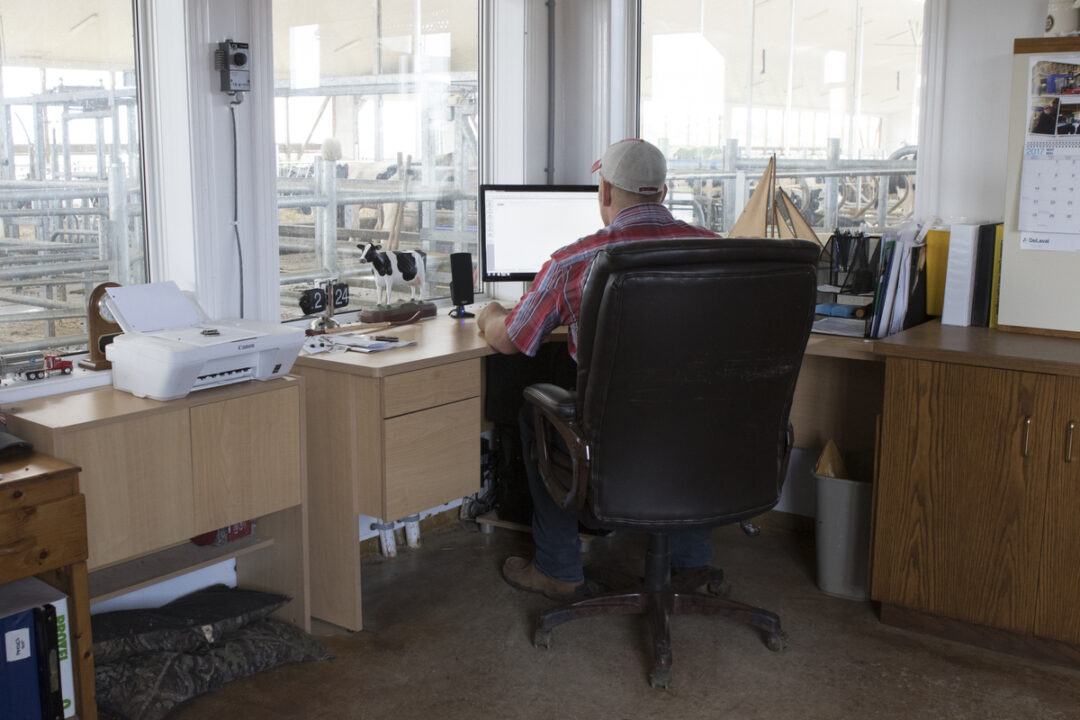While we need to protect our dairy cattle during these hot days, it is also an important time to be conscious of how to protect ourselves, family members and farm workers.
Heat-related illnesses are serious
Heat-related illness is most studied in workers in crop operations, since that work almost always occurs outdoors. One study found that the rate of farm worker deaths was 20 times higher than the 0.2% rate for U.S. civilian workers overall. For dairy producers, it’s important to keep this in mind when performing any outside task, including those connected to crops including hay, operating a skid steer that might only offer limited shade, calf care or performing outside maintenance on buildings.
Heat-related illness often develops quickly and can then rapidly progress into deadly stages. Unrecognized heat exhaustion – an early but dangerous stage of heat-related illness – can progress rapidly to heatstroke. A significant percentage of people who develop heatstroke will die.
When air temperatures are combined with a high level of relative humidity, a direct measurement of water vapor in the air, the body cannot cool itself quickly enough because sweat does not easily evaporate. It is important to know that when we “work up a sweat” it’s a good thing, as evaporation from our skin means that heat is moving from the skin into the surrounding air.
Sunshine also adds to this effect as exposed skin and clothing also heats up due to the sun’s radiation. When body temperature gets too high from working in these conditions, it will impair a person’s ability to think correctly and make complex (or even simple) safety-related decisions. These working conditions can also slow down reaction time. Additionally, heat and humidity often have the effect of discouraging the use of personal protective equipment that might be required with certain farm tasks. All of these impacts of high temperature on our bodies and brains have the potential to increase the risk of farm injury.
It’s important to note that youth and older people have a higher risk for heat-related health issues since they can have a more difficult time regulating body temperature. In the case of kids, they have a smaller body mass-to-surface area ratio as compared to adults. This is similar to having a motor vehicle with an undersized radiator. It’s a bit more complex with older people, but as we age, we are not as effective at cooling ourselves as a result of circulatory changes and our sweat glands not functioning as efficiently as in younger people.
It is difficult to give a specific temperature or humidity level that will “warn” farm workers of unsafe conditions. Generally, the potential for heat stress becomes significant when air temperatures rise above 85°F with humidity levels from 30%-60%. Once temperatures rise above 95°F, the dangers are dramatically magnified. Also, at humidity levels above 60%, a person’s body simply struggles to shed heat quickly enough even at lower temperatures.
During any physical activity, the body generates heat. The greater the intensity of the work, the more heat. A person’s ability to stay cool also depends on clothing, conditioning to heat and humidity, and level of health and fitness along with factors connected to age. Air movement due to natural breezes or fans help carry away heat.
What are the signs of heat stress?
Here are a few indicators of heat-related illness and recommendations for treatment from the American Red Cross:
-
Heat exhaustion: Symptoms are cool, moist, pale or flushed skin with heavy sweating, headache, nausea or vomiting, dizziness and exhaustion. A person with heat exhaustion may have a normal or rising body temperature. If heat exhaustion is suspected, the person should be moved to a cool, shaded place. Clothing should be loosened and moist cloths applied to the forehead, wrists and chest to cool down. An alert person should slowly drink a cool fluid every 15 minutes. If symptoms do not improve after an hour, or if they refuse fluids, vomit or lose consciousness, call 911. A person who develops heat exhaustion should see a doctor right away if underlying health conditions exist.
- Heatstroke: Symptoms are hot, red skin; changes in consciousness; a rapid and/or weak pulse; and rapid, shallow breathing. A person experiencing heatstroke can have a high body temperature – sometimes as high as 105ºF. Skin will often feel dry but not always. Heatstroke must be treated as a life-threatening emergency. Call 911. While waiting for help, the person must be cooled quickly by being immersed in cool (not ice-cold) water or having saturated cloths applied and sprinkled with cool water. Fans can be used to speed cooling. A person with heatstroke should drink cool liquids, but only if alert. The person should be monitored as in any urgent first-aid situation.
What are some steps dairy workers can take to reduce heat stress?
- Plan physically strenuous tasks during cooler times of the day.
- Help employees gradually acclimate to hot conditions by initially exposing them to short work periods and frequent breaks. But even for those who are comfortable in the heat, monitor their conditions closely.
- Try to work in shaded, ventilated areas (with either a fan or breeze) whenever possible.
- Watch for high temperature/high humidity outdoor conditions and adjust assignments to reduce risk.
- Wear lightweight, breathable clothing. Light colors are cooler.
- Wear a loose-fitting hat to provide sun protection.
- Apply sunscreen to protect against sunburn and skin cancer.
- Drink often! Water is usually the best drink for outdoor work. Occasional sports drinks are okay for most people. Avoid sugary sodas and caffeine. Salt tablets are not recommended unless a doctor recommends them.
- Anyone who must restrict fluid intake because of a medical condition should check with a doctor about safe work in hot weather.
Engineering controls
Engineering controls, often in place to reduce heat stress for livestock, can also be beneficial for dairy workers as well. Dairy farm heat stress abatement can include providing additional shade and increasing air movement.
Permanent or temporary shade structures can reduce worker heat stress. Protect both cows and workers from solar radiation by adding shade to feeding areas, dry lots and holding areas.
Moving air through dairy facilities is critical during summer months for both cow and worker comfort. Fans in dairy buildings should be maintained and tested frequently throughout warm weather months. Buildings that rely on natural ventilation may need additional fans to improve summer air exchange, particularly if prevailing breezes are limited by other buildings or obstacles.
Resources for medical assistance for workers without health insurance
-
Free clinics: Call 211. These clinics offer medical services to people for free.
- Community centers: Go to HRSA - Find a Health center and Wisonsin Primary Helath Care Association - Find a Health Center to find the center nearest you.













